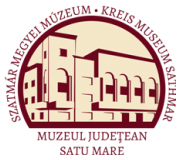Marta, Liviu (szerk.): Satu Mare. Studii şi comunicări. Seria arheologie 26/1. (2010)
Nagy József-Gábor - Körösfői Zsolt: Early Iron Age Storage Pit at Porumbenii Mari-Várfele (Harghita County)
Nagy József-Gábor- Körösfői Zsolt 22. Shallow bowl fragment (Figure 7/5), with incurving rim, well smoothed, greyishblack, with crushed sherd temper. 23. Bag-shaped vessel (Figure 6/1), with grooved decoration on the neck and impressed decoration on the rim, poor smoothed, brown-brick red, with secondary burning and pebble temper. 24. Bag-shaped vessel (Figure 6 /2), with a knob on the neck, coarse, poor smoothed, greyish-brown with secondary burning and crushed sherd temper. Analysis of vessels’ forms and decorations In the analysis of the pottery forms and decorations, the stray finds from the surface collections were also studied and compared to the previous archaeological materials. Although the pottery from the 1956-1957’s excavations was very fragmented, on publishing the excavation results Zoltán Székely determined a few important vessel types that are characteristics of the Early Iron Age. Based on the pottery fragments, it could be determined that the black, polished vessels with thick walls, cylindrical necks and prominent, biconical bodies decorated with channeling dominated the pottery production of the settlement.22 Analyzing the findings, Zoltán Székely mentioned three cups,23 and two bag shaped vessels decorated with knobs on the neck.24 The researcher from Sfântu Gheorghe distinguished two bowl types: one with outcurved rim, articulated body, omphalic base, with internal decoration,25 and another with strongly outcurved rim, arched body and omphalic base.26 In Székely’s assessment there were two mug types: one “kidney shaped”, with omphalic base and looped handle,27 28 and the other with arched body, slightly outcurved rim.2K Besides the mentioned types, mugs, with channelled decoration on the upper part of the body, could be identified. Regarding the ornamentation of the vessels, Zoltán Székely draws attention to the frequency of channeling and the decoration pattern with incised, parallel, wavy lines. The channeling was usually located around the knobs and the boss pressed from inside the wall of the vessel.29 The pottery fragments decorated with S shaped incisions and cord ornaments that have analogies at Tilişca,30 Braşov31 and Cuci,32 were considered by Zoltán Székely to be an influence coming from the Southern Carpathian region.33 The majority of the findings from to the Early Iron Age pit, researched in 2007, have been restored. Besides the large urns there are a number of pottery fragments that could not be restored. Two major categories could be distinguished, based on the external aspect of the vessel (surface treatment, polishing degree), the method of preparing the clay and the temper used in creating the pottery: a. fine pottery (biconical pots, mug and bowls) and b. coarse, utilitarian pottery (bag-shaped pots). The category of fine pottery, with well smoothed surfaces includes the vessels with outcurved rim, cylindrical neck, biconical body and narrow base. One can consider these well-known urns in the Mediaş-Teleac cultural area as the most characteristic vessel types 22 Székely 1966, 31,55, pl. VI/1-3. 23 Székely 1966, 33, 55, pl. VI/6, 9, 18. 24 Székely 1966, 33, 55, pl. VI/5, 20. 25 Székely 1966, 33, 55, pl. VI/6, 10. 26 Székely 1966, 33,55, pl.VI/11, 15. 27 Székely 1966, 33, 55, pl. VI/16. 28 Székely 1966, 33, 55, pl. VI/22. 29 Székely 1966, 33, 53, pl. V/3. 30 Lupu 1989, pl. 4/2, 7; 5/4. 31 Alexandrescu - Pop 1970, 164, fig. 5/4. 32 Berciu - Berciu 1946, 21. 33 Székely 1966, 53, pl. V/l; Vasiliev et al. 1991,94. 136
